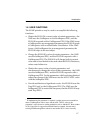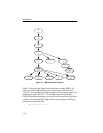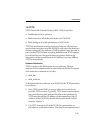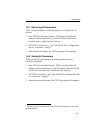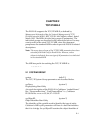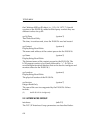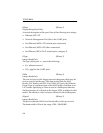
Introduction
1-13
1.8 TFTP
TFTP (Trivial File Transfer Protocol, RFC 1350) is used for:
• Distribution of new software.
• Bulk retrieval of all of the parameters of a ELS10-26.
• Bulk setting of all of the parameters of a ELS10-26.
TFTP has no inherent security provision; however, all files have
special data encryption, and the ELS10-26 will reject files that have
not been encrypted. In addition, SNMP primitives may be used to
prevent the ELS10-26 from accepting unauthorized TFTP requests,
even if the files have the special data encryption. Refer to the
description of the sxswdis branch of Cabletron’s private MIB for
TFTP security details.
Software Distribution
TFTP is used for the distribution of new software. The new
software will be automatically invoked when an ELS10-26 reboots.
New software is released in two files:
• dnld_hdr
• dnld_software
To distribute the new software to an ELS10-26, the TFTP procedure
is as follows:
1. Start TFTP on the NMS, or on any other device which can
provide TFTP services. (Typically, TFTP must be started from
the same directory that contains the files to be transferred.)
TFTP must be told the IP address of the remote host (the IP
address of the ELS10-26), and the file transfer mode (which
must be “binary”).
2. Use TFTP to retrieve all of the ELS10-26’s parameters, as
described in a subsection below. This step is not required, but it





